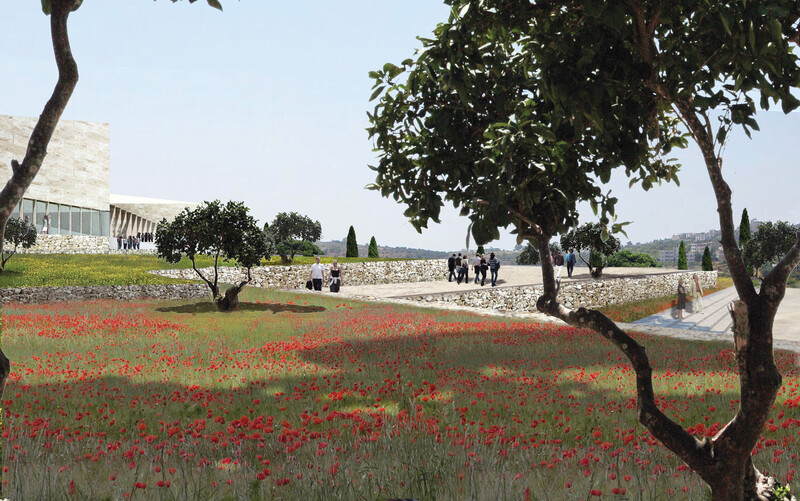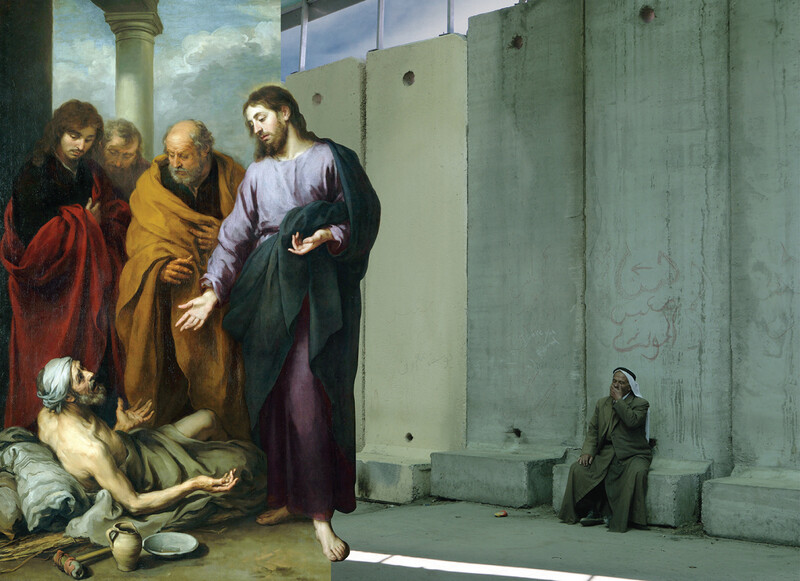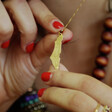The Electronic Intifada 30 September 2014

Museum campus concept illustration courtesy of the Palestinian Museum.
In the hills of the occupied West Bank town of Birzeit, near the city of Ramallah, construction began earlier this year on the Palestinian Museum.
Using an innovative approach in space and exhibition design, the project breaks away from traditions in museum practice. Besides showcasing Palestinian art and culture, the museum hopes to create a space that generates conversation and ideas for the future.
While its main hub will lie in Birzeit, the museum is building a network of partnerships and satellites abroad, with aims to extend beyond the geographic borders of Palestine, which are under restrictive Israeli control, to its expansive diaspora.
Jack Persekian, director and head curator of the museum, met with The Electronic Intifada at the office of the Palestinian Museum in June. “The museum is the brainchild of the Welfare Association,” he said, referring to a not-for-profit organization focused on development and humanitarian projects in Palestine.
“They were thinking back in 1997 to commemorate the Nakba [the expulsion of more than 750,000 Palestinians leading up to and after Israel’s establishment] on its fiftieth anniversary in 1998. And they thought of the concept of the Palestinian Museum of Memory.”
The idea was shelved when the second intifada broke out in September 2000 but was revived in the mid-2000s, when a new team reviewed the concept of the project.
The group began to approach “the idea of the museum from a broader perspective,” Persekian explained, “not necessarily start or stop at the Nakba, even though the Nakba is a major turning point in the life of Palestine and Palestinians. But nevertheless to look at Palestinians before that and after that … take that history and that memory as a means to reflect on what’s happening today and as a way to think through ideas, concepts and propositions for the future.”
Museum without borders
The team also began to reconceptualize the museum site itself. It was decided that a main hub would be built in Birzeit in two stages, the first to house rotating exhibitions and the second, larger building to feature a permanent collection.
But the team also re-imagined how a museum might connect with other installments beyond Palestine. “Gradually the idea started evolving and one major component was to not just think about the museum as a location and a building, but to think about this museum as an institution that can serve Palestinians wherever they are,” Persekian said.
“We know that more than half of the Palestinians are outside of Palestine. So we started thinking of the museum as a hub with branches and partnerships in other places, particularly in places where Palestinians themselves cannot access this site in Birzeit,” including Gaza, Jordan and Lebanon, Persekian explained.
The museum began establishing partnerships abroad and connecting to existing institutions and projects to create satellites to house its exhibitions.
It has begun plans for its first show, titled Never Part, which tells the stories of Palestinians all over the world and the objects they cherish. This exhibition, Persekian hopes, can travel abroad through satellites.
“[It] won’t be this one body of work, but it will move and transform as it travels from one place to another,” he explained. “The whole exhibition will embody the state that Palestinians are living in, and the objects and stories inside will reflect that as it moves from one area to another and different people get involved.”
Mapping Palestine’s museums
Besides making connections abroad, the museum has begun to build a network between museums inside geographic Palestine itself, where Palestinian communities are cut off from each other and isolated from the outside world by Israel’s regime of closure and checkpoints.
“We mapped the museums in Palestine. We looked at what’s out there and discovered there are 51 museums,” Persekian explained.
“Not all of them functioning — some closed, some [are] not as visible as others. Nonetheless, we decided that we’re part of this community and we would like to create a network amongst these museums so we can help each other,” he said.
“This will help us integrate and help all of us to raise the capacity and the performance of museum work in Palestine. So we started now on a series of workshops; we brought in some specialists in particular areas: archiving, collections, IT [information technology], all sorts of different practical technical issues of concern to the museum community,” Persekian added.
The term “museum community” is something that the team is trying to develop, he added, “because this field — if I can call it a field — is so fragmented, and each entity, each museum is totally separate from the rest. There is no communication. So what we’re trying to do is find this common ground where we can all meet and share and find synergies amongst ourselves.”

From the In the Presence of the Holy See series: UNRWA photo archive image of Dheisheh refugee camp after the 1948 partition justaposed with Tanya Habjouqa’s 2012 photo of Israel’s wall near Beit Hanina, Jerusalem.

From the In the Presence of the Holy See series: “Christ healing the Paralytic at the Pool of Bethesda” (c.1670) by Bartolomé Esteban Murillo, juxtaposed with Alexandra Boulat’s 2006 photo of Palestinian at Erez checkpoint in Gaza.
Embodying the museum’s unique approach, its first exhibition in May 2014 was displayed not in the museum’s physical site (which was still under construction at the time), but in public space, through partnerships and on postcards.
Titled In the Presence of the Holy See, the exhibition featured images of present-day Palestine collaged and interlaced with traditional Christian imagery and archive photos. Prints of the images were displayed in Bethlehem’s Manger Square during the Pope’s visit earlier this year, as well as in nearby Dheisheh refugee camp. The images were later printed as a set of postcards.
Persekian said that the project “was about taking something, the image of Palestinian struggle, and suffering, and all of that, which has become a little bit worn out in the media as people have seen it over and over again — I wanted people outside to look at this again, to discover it again.”
“Safe place for unsafe ideas”
The Palestinian Museum describes itself as “A safe place for unsafe ideas,” calling attention to its innovative approach to the function of the museum.
The museum’s refreshingly experimental yet comprehensive approach does not neglect that approximately seven million exiled Palestinian refugees live across the world, the vast majority of them prevented by Israel from returning to Palestine, even just to visit.
“In a state like ours where there is a lot of fragmentation and people can’t reach each other, we started thinking about how can we make these linkages,” Persekian said. “How can we talk about concepts and ideas and how can we engage with Palestinians who do not share the same geographical area as we do?”
The team is inviting Palestinians to participate in its opening show, Never Part, through the museum’s website, where people can submit stories about the objects they have kept and cherished.
Promising to be a compelling experience, the Palestinian Museum’s physical space is planned to open by the end of 2015.
Daryl Meador is a graduate student studying media at The New School who recently lived and volunteered in Nablus. Follow her on Twitter: @yalladaryl.





